2019 European Elections. The weight of the political electorates compared to the electoral weight of the parliamentary groups
Distinguishing between the weight of electorates and the electoral weight of parliamentary groups
Populist Right Electorate
Pro-European Right Electorate
Pro-European Centre Electorate
Pro-European Left Electorate
Populist Left and the Extreme Left Electorate
Environmentalist Electorate
Regionalist/Separatist Electorate
Atypical and/or emerging Electorates
The “Unknown” category
Comparing the weight of the political electorates with the electoral weight of the parliamentary groups
Quantifying and qualifying the eurosceptic vote
2019 European Elections. The weight of the political electorates compared to the electoral weight of the parliamentary groups
The Fondation pour l’innovation politique wished to reflect on the European elections in May 2019 by assessing the weight of electorates across the European constituency independently of the electoral weight represented by the parliamentary groups comprised post-election.
Considering Europe as a constituency, the analysis of the European elections in May 2019 reveals the following results:
– 64,748,735 voters voted for Eurosceptic lists, both on the right and on the left. This represents 32.6% of the votes cast and 16.2% of all voters registered on the electoral lists.
– The vote in favour of the populist right represented 46.974.152 votes, i.e. 23.7% of the votes cast and 11.8% of the registered voters.
– The pro-Europeans, right-wing, left-wing, environmentalists and other lists attracted 133.811.329 voters, or 67.4% of votes cast and 33.6% of voters registered.
– Within the vote in favour of the pro-European lists, the centre and right-wing electorate received 63.981.659 votes and represented 32.2% of the votes cast and 16% of the total number of registered voters, i.e. almost double the electorate of the pro-European left: 34,412,885 votes, 17.8% of votes cast and 8.9% of the total number of registered votes.
– Environmentalist lists accounted for less than one-tenth of the votes cast (9.4%) with 18.723.127 votes, or 4.7% of those registered.
– Abstention, though in decline, remains very high. It includes 195 million voters. Blank and invalid votes represent more than 4 million votes.
Guillemette Lano,
Intern at the Fondation pour l'innovation politique
Raphaël Grelon,
Intern at the Fondation pour l'innovation politique
Dominique Reynié,
Director of the Fondation pour l’innovation politique, Professor at Sciences Po, Paris.
Victor Delage,
Director of Studies and Communications at the Fondation pour l'innovation politique.
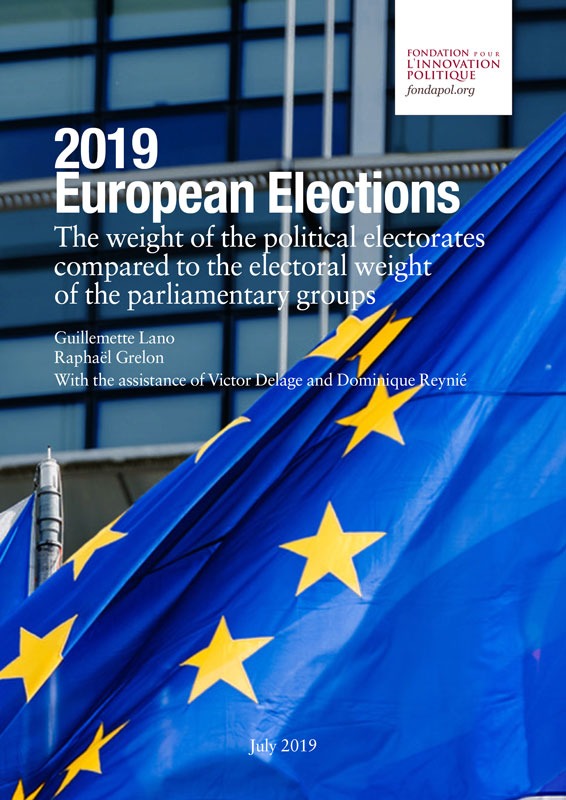
Distinguishing between the weight of electorates and the electoral weight of parliamentary groups
As the UK Electoral Commission does not provide any figures in terms of the number of votes for the European elections until August 2019, we calculated the number of votes received by each of the lists in the United Kingdom based on the percentages of the official results of the number of votes cast, the number of voters on the lists in the last general election in the United Kingdom, and the participation figures in the European elections of May 2019.
The Fondation pour l’innovation politique wished to reflect on the European elections in May 2019 by assessing the weight of electorates across the European constituency independently of the electoral weight represented by the parliamentary groups comprised post-election.
For example, we have reconstructed a right-wing Eurosceptic electorate by aggregating the votes in favour of right-wing national lists whose discourses are hostile to the European Union. In this case, for instance, this methodology has led us to assign those who voted for Fidesz not to the European People’s Party (EPP) group but rather to an electorate which we describe as the “populist right and extreme right” in which we also include those who voted for the Italian Lega, the French National Rally, the Austrian FPÖ and the Sweden Democrats. Likewise, Slovak SMER voters were detached from the Progressive Alliance of Socialists and Democrats (S&D) Group and instead categorised as part of an electorate which we describe as the “populist left and extreme left”.
A) The data collected
The electoral results were collected list by list, country by country1, from the websites of the national parliaments and governments of each of the States of the Union. We then aggregated these data at the European level, thus obtaining:
- the number of individuals registered on the electoral lists on the date of the elections, or the voters;
- the number of votes, or the voters;
- the number of valid votes in favour of each of the lists, or the votes cast;
- the number of invalid votes, or the blank or invalid votes.
Due to a multitude of lists receiving only a tiny proportion of the votes, only results above 0.5% of the votes cast at the national level were included in our study. The impact of such a threshold on the results is minimal, given that more than 97% of the votes cast were counted in our study. While the remaining 3% represent a total of 5 million votes cast – which is not insignificant – these were in favour of a very large number of politically disparate and electorally marginal groups, none of which therefore cross this threshold of 0.5% of the votes cast at the national level.
This census, which is inevitably imperfect notably due to the difficulties in accurately identifying the political sensibilities of European voters through their votes cast across more than 350 national lists, is intended to be supplemented and amended by whomever wishes to do so, by sharing their remarks, criticism and recommendations with us at the following address.
B) List of the identified electorates
Nine types of electorates have been identified:
- Populist right and extreme right;
- Pro-European right;
- Pro-European centre;
- Pro-European left;
- Populist left and extreme left;
- Environmentalists;
- Regionalists/separatists;
- Atypical/emerging (animal-rights, “pirates”, satirical);
- Unknown
Note that abstention remains very high, with almost 195 million Europeans falling into this category. We also note there were more than 4 million blank and invalid votes, more than the animal-rights, pirate and satirical votes put together.
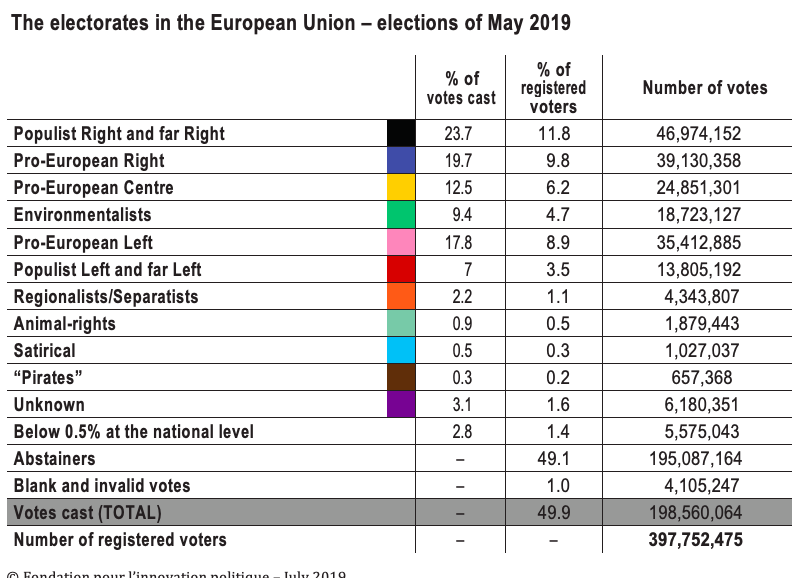
Copyright :
© Fondation pour l’innovation politique – July 2019.
Populist Right Electorate
- Percentage of votes cast: 7%
- Percentage of registered voters: 8%
- Number of votes: 46,974,152
The “populist right and extreme right” electorate consists of the votes in favour of right-wing and extreme right-wing parties which have an adversarial relationship with the European Union as an institution, or even with the idea of a European Union. The reader will therefore find votes in favour of political parties who are members of the European People’s Party (EPP), such as Viktor Orbán’s Fidesz, within this electorate.
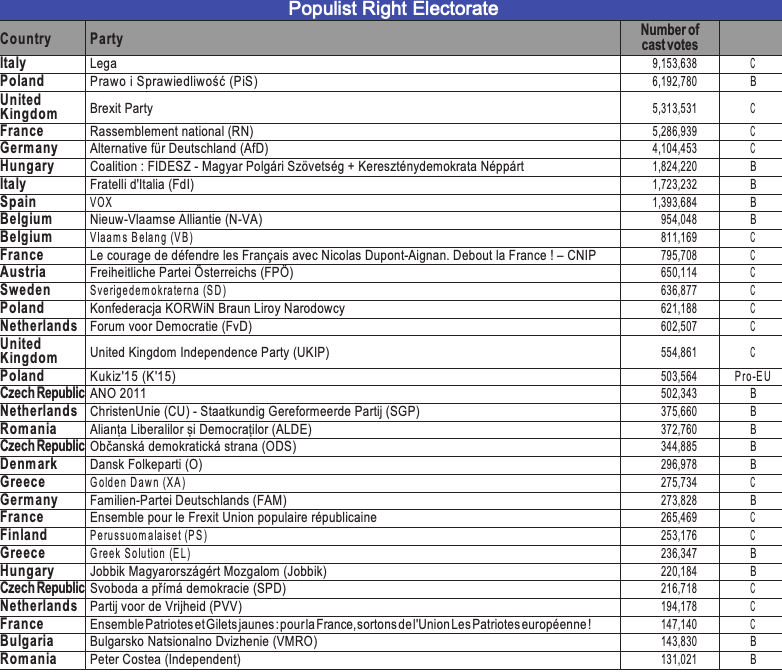
Copyright :
© Fondation pour l’innovation politique – July 2019.
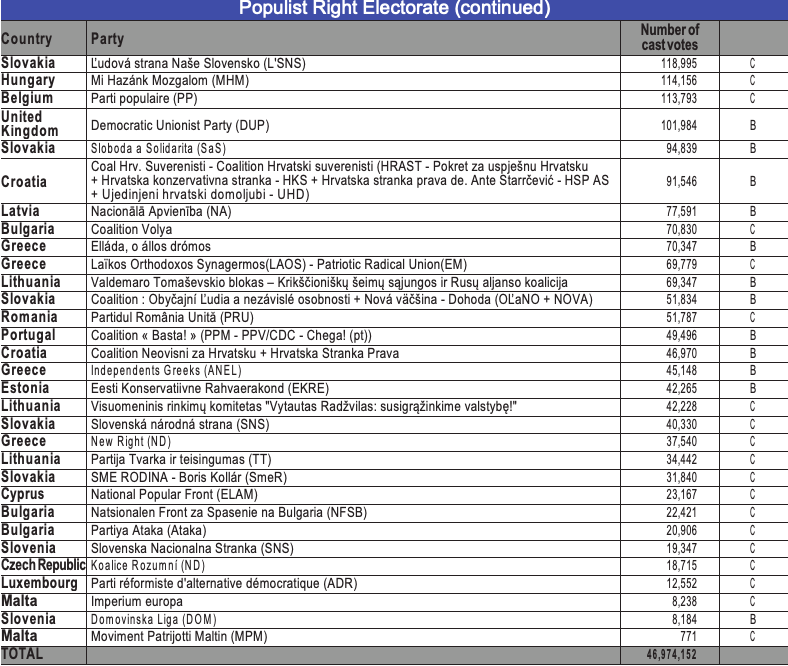
Copyright :
© Fondation pour l’innovation politique – July 2019.
Pro-European Right Electorate
- Percentage of votes cast: 7%
- Percentage of registered voters: 8%
- Number of votes: 39.130.358
The pro-European right electorate includes the traditional right-wing votes inspired by Christian Democrat and Liberal-Conservative politics. Voters for parties including the German CDU, the Spanish PP, the Polish Civic Platform and the Republicans in France form the core of this electorate.
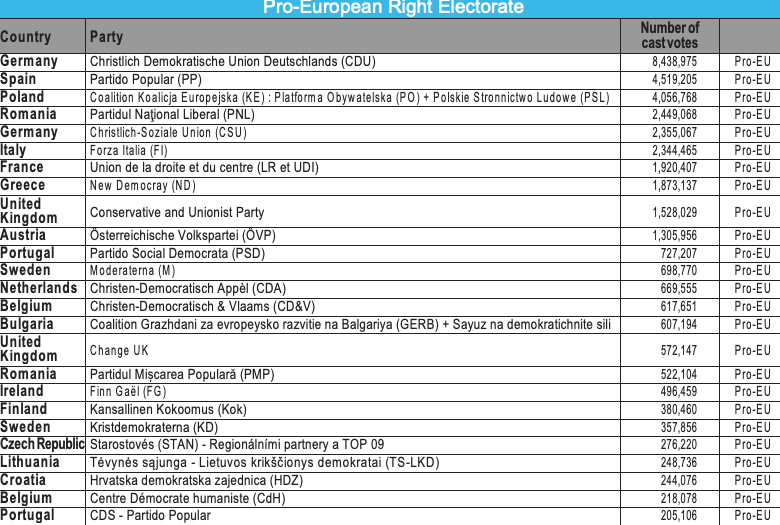
Copyright :
© Fondation pour l’innovation politique – July 2019.
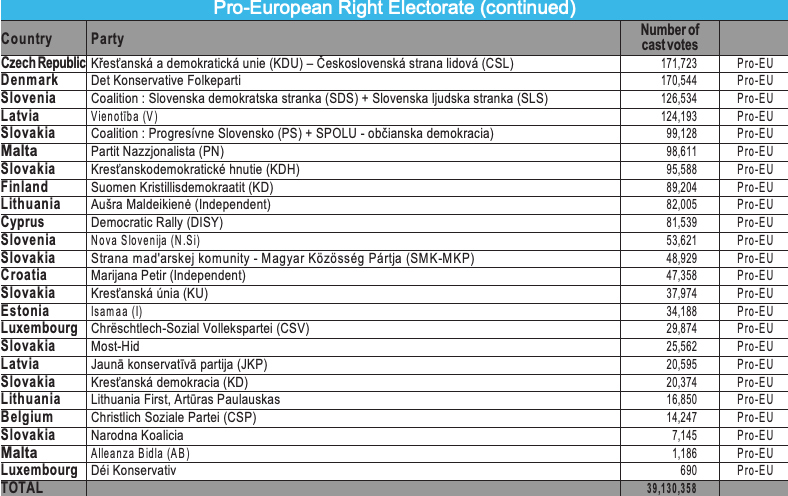
Pro-European Centre Electorate
- Percentage of votes cast: 5%
- Percentage of registered voters: 2%
- Number of votes: 24.851.301
This electorate consists of votes in favour of lists defending the social market economy, values focused on individual freedoms and a vision of a federally inspired Europe. The voters of The Republic on the move! in France and Citizens in Spain alone represent almost a third of this electorate.
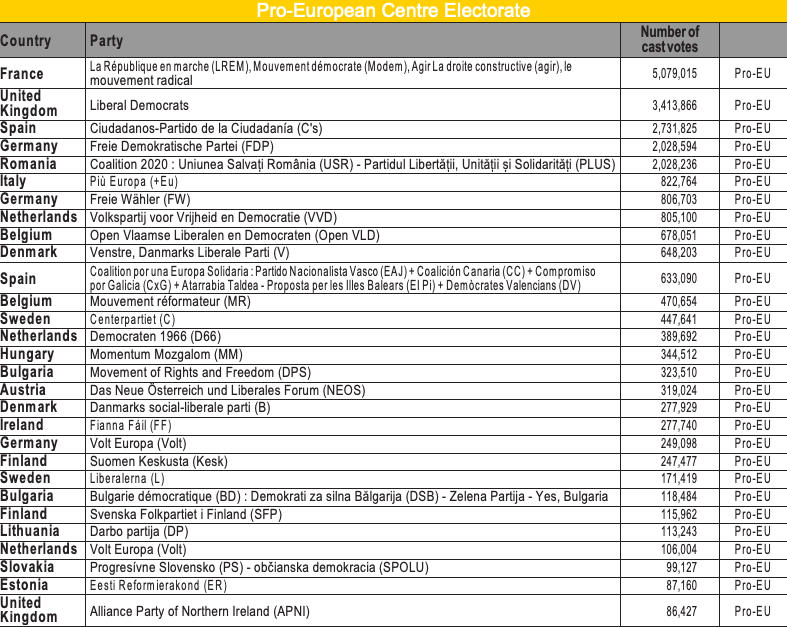
Copyright :
© Fondation pour l’innovation politique – July 2019.
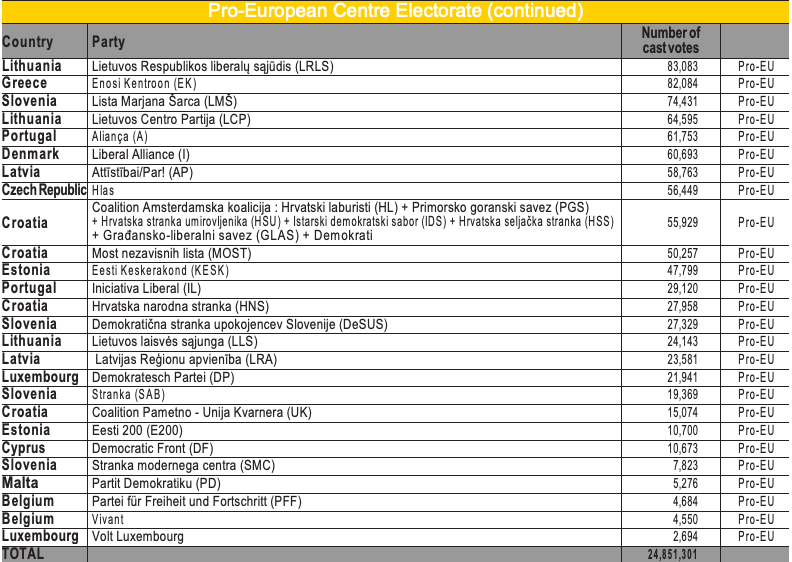
Copyright :
© Fondation pour l’innovation politique – July 2019.
Pro-European Left Electorate
- Percentage of votes cast: 8%
- Percentage of registered voters: 9%
- Number of votes: 35.412.885
The pro-European left electorate includes votes for lists in favour of increased European integration. Voters for certain national parties that are members of the Progressive Alliance of Socialists and Democrats (S&D) in the European Parliament, such as the Slovak SMER, have been grouped into an electorate that we are calling the “populist left”. Votes for the Slovak party are thus classified as being part of the “populist left and the extreme left” electorate.
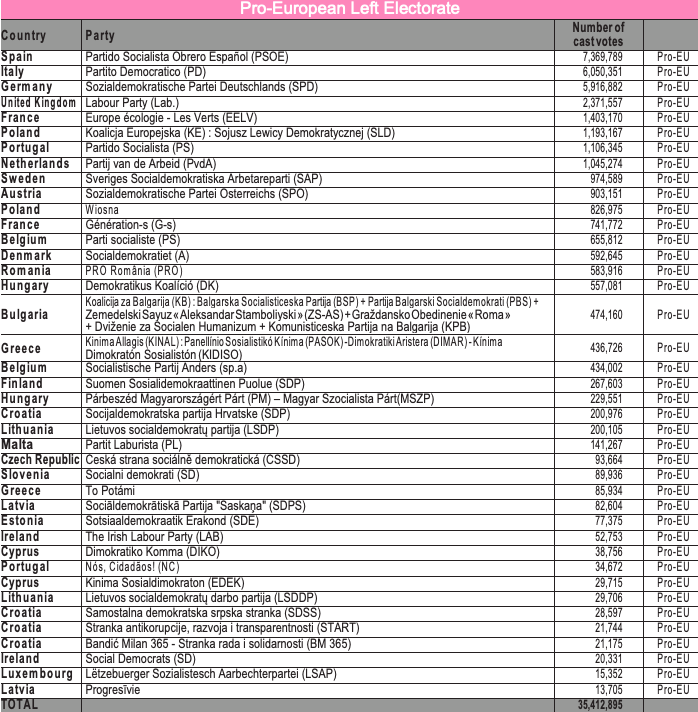
Populist Left and the Extreme Left Electorate
- Percentage of votes cast: 7%
- Percentage of registered voters: 5%
- Number of votes: 13.805.192
This electorate consists of voting for lists developing a leftist discourse inspired by socialism or communism, one more radical than that of the Social Democrats. This electorate’s stance vis-à-vis the European Union has been classified on a case-by-case basis: while many of these votes express strong criticism of the European Union, which may even be rejected, others confirm to be pro-European, such as the votes in favour of the Portuguese party LIVRE.
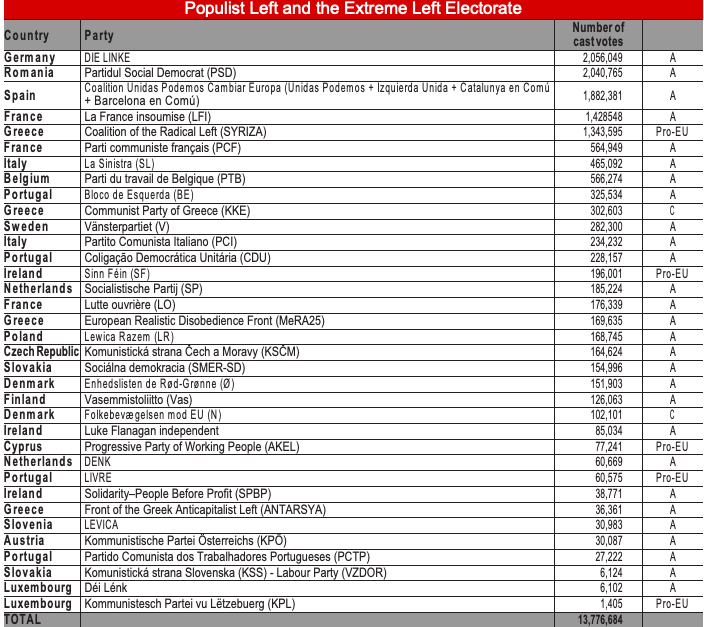
Copyright :
© Fondation pour l’innovation politique – July 2019.
Environmentalist Electorate
- Percentage of votes cast: 4%
- Percentage of registered voters: 7%
- Number of votes: 18.723.127
This electorate groups the votes in favour of the ecological lists stricto sensu. The weight of this electorate (9.4%) does not correspond exactly to the electoral weight of the Greens / EFA group in the European Parliament (9.9% of seats and 10.2% of votes cast), insofar as the latter includes some elected animal- rights lists and “pirates”, classified here in an electorate that we refer to as atypical/ emerging.
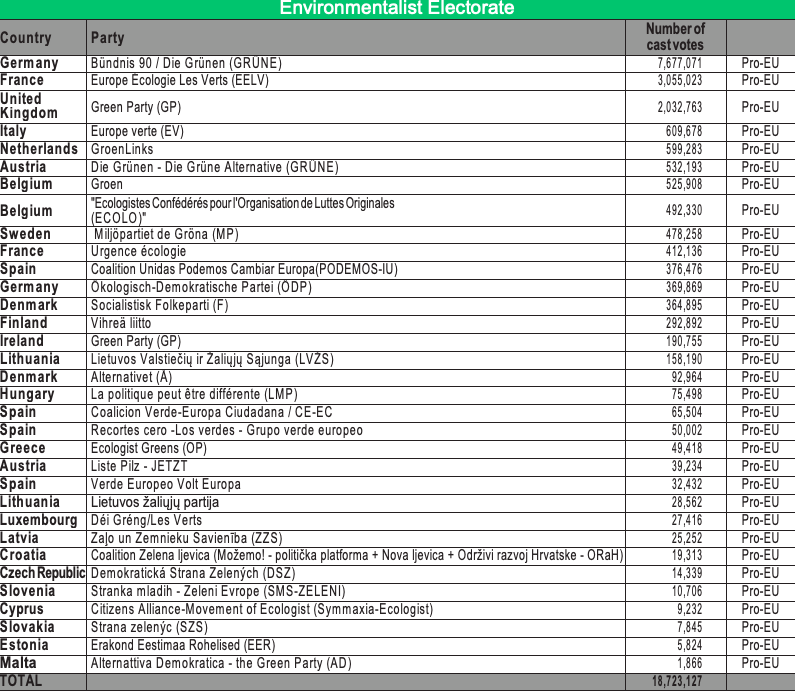
Regionalist/Separatist Electorate
- Percentage of votes cast: 2%
- Percentage of registered voters: 1%
- Number of votes: 4.343.807
With more than 4 million votes, the regionalist/separatist electorate is mainly concentrated in Spain (Free for Europe, with 1.018.435 votes for the independence of Catalonia, and Republics Now! attaining 834,749 separatist votes across numerous regions of Spain), Scotland (Scottish National Party with more than 600.000 votes) and Romania (Democratic Alliance of Hungarians in Romania, 476.777 votes).
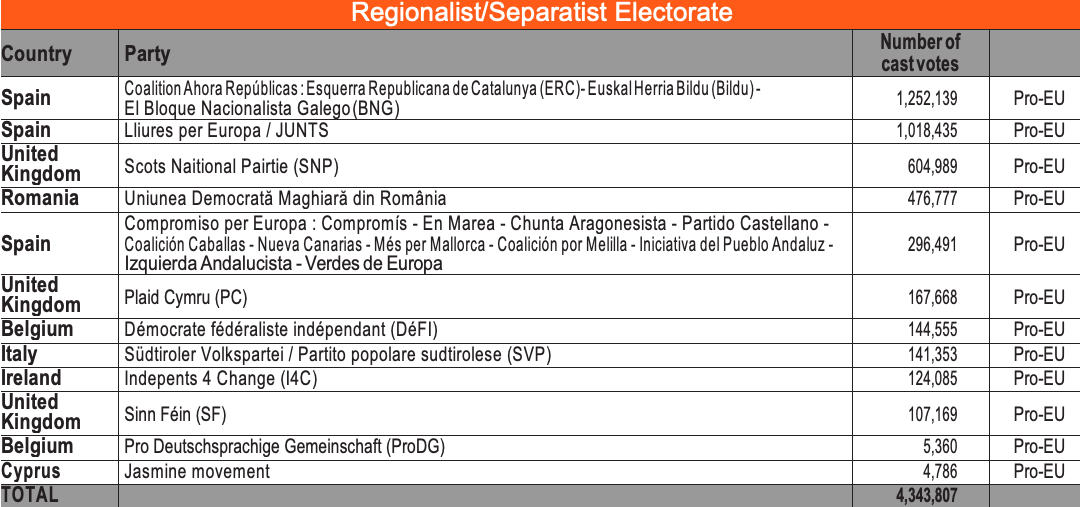
Copyright :
© Fondation pour l’innovation politique – July 2019.
Atypical and/or emerging Electorates
- Percentage of votes cast: 7%
- Percentage of registered voters: 9%
- Number of votes: 3.563.848
Here we have combined votes in favour of animal-rights lists (0.9% of votes cast, 0.5% of total votes cast and 1.879.443 votes), “pirates” (0.3% of votes cast, 0.2% of total votes cast and 657.368 votes) and satirical lists (0.5% of votes cast, 0.3% of total votes cast and 1,027,037 votes).

Copyright :
© Fondation pour l’innovation politique – July 2019.

Copyright :
© Fondation pour l’innovation politique – July 2019.

Copyright :
© Fondation pour l’innovation politique – July 2019.
The “Unknown” category
- Percentage of votes cast: 1%
- Percentage of registered voters: 6%
- Number of votes: 6.180.351
The “Unknown” category includes votes in favour of lists whose political orientation is difficult to identify. The best known case, and the only quantitatively significant one, is that of the 5-star Movement (M5S) in Italy (4.552.527 votes). In general, these votes favour lists that promote the causes or interests of particular social groups, e.g. the “Feminist Initiative” in Sweden, or retirees’ interest in lists such as “50+” in the Netherlands.
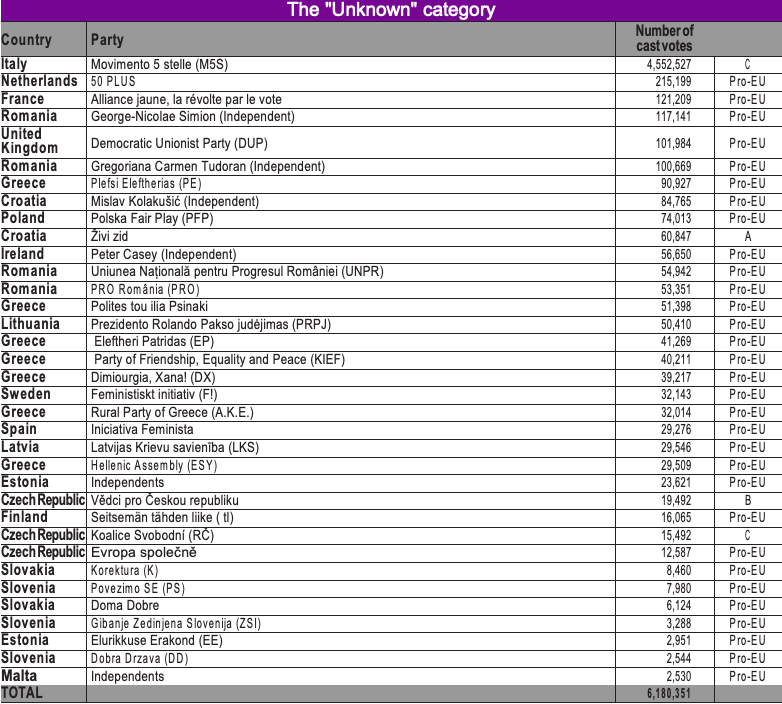
Copyright :
© Fondation pour l’innovation politique – July 2019.
Comparing the weight of the political electorates with the electoral weight of the parliamentary groups
The comparison between the weight of the electorates and the electoral weight of the parliamentary groups is enlightening. The parliamentary groups bring together parties with different and sometimes even contradictory positions. We have favoured an approach based on the political sensibilities of the electorates. Our choice reveals significant differences between the weight of the electorates and the weight of the parliamentary groups.
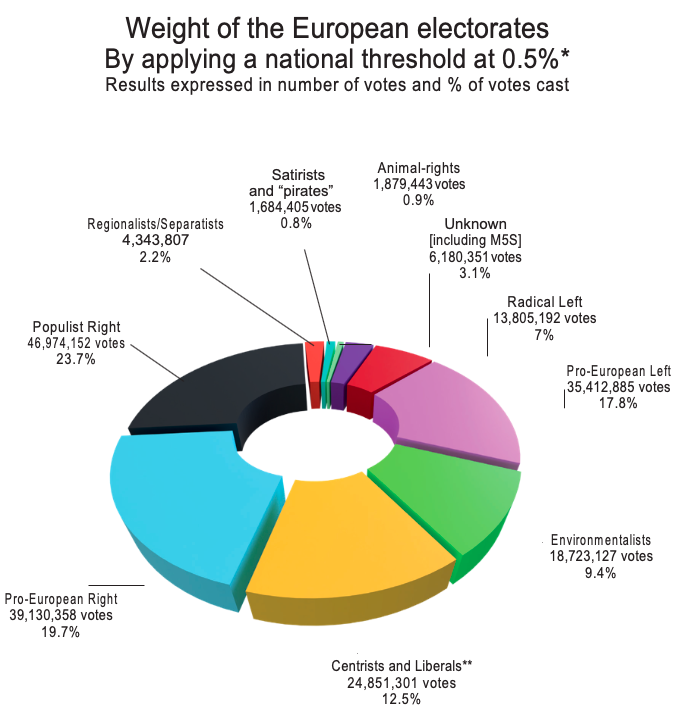
Copyright :
© Fondation pour l’innovation politique – July 2019.
Source :
*All votes for lists/parties/candidates which reached 0.5% of the votes cast nationally were counted. With this threshold, 97% of the votes cast throughout the European Union are identified and represented here.
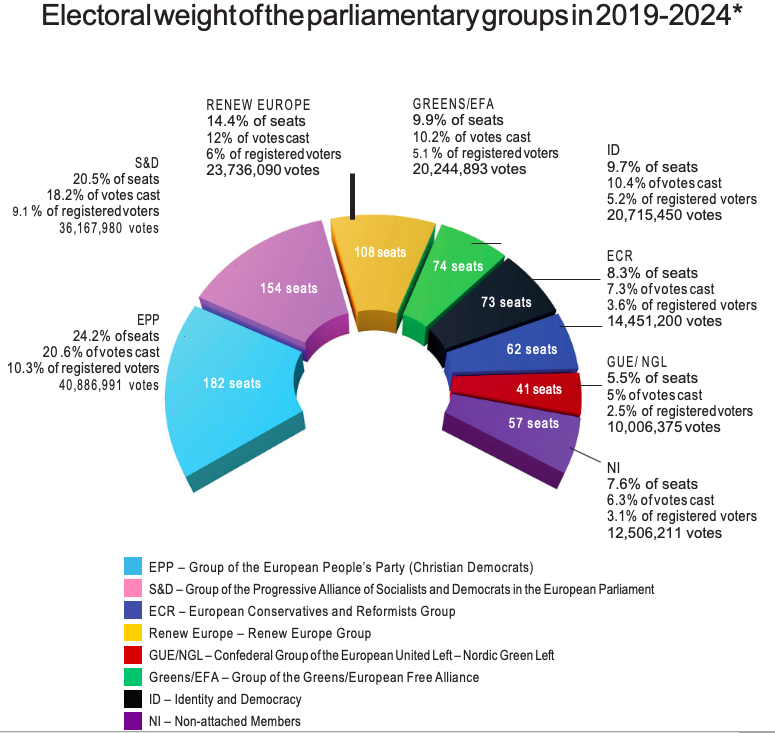
Copyright :
© Fondation pour l’innovation politique – July 2019.
The centrist-liberal electorate has a lower share of votes cast (12.5%) than the share of Renew Europe political group has seats in the European Parliament (14.4%).
Atypical and/or emerging electorates, composed of animal-rights, “pirate” and satirical lists, which represent 3.563.848 votes, thus have no weight in the European Parliament. The multitude of small, unrepresented national parties therefore renders a considerable number of votes invisible.
Quantifying and qualifying the eurosceptic vote
This work aims notably to quantify the number and share of voters who see their views reflected in a discourse which is markedly hostile towards the European Union. In the European elections in 2019, according to our definitions and classification, there were 99 Eurosceptic lists that exceeded the threshold of 0.5% of votes cast. This represents 32.6% of the votes cast, i.e. 64.748.735 votes and 16.2% of registered European voters.
In contrast, those who voted for national lists in favour of the European Union represent 67.4% of the votes cast, i.e. 133.811.329 votes, corresponding to 33.6% of those registered.
Nevertheless, the reality of the “Eurosceptic” electorate is particularly complex, including votes in favour of a multitude of lists corresponding to different political positions. Disparate and divided between separatists, nationalists, outsiders, left-wing and right-wing, liberals and statists, the lists hostile to Europe convey messages that range from repeated criticism of the European Union to plans to leave it. The number and diversity of these lists reflect the variety, in content and intensity, of critical views towards Europe. Furthermore, in the European Parliament, the representatives elected by these voters with varied motives are dispersed across political groups which often have varying ideologies. Some of these elected representatives do not belong to any group and are found among the “non-attached members”. For all these reasons, we felt it was necessary to distinguish between the Eurosceptic vote and the anti-European vote, even though we subsequently aggregated them to measure the electoral potential of the Eurocritical opinion.
- The anti-liberal Eurosceptic electorate (A) brings together voters who voted in favour of lists proposing radical reform of the European These anti-liberals advocate for the strengthening of solidarity, equality and direct democracy in a discourse that can, however, go as far as rejecting the European Union.
- The liberal Eurosceptic electorate (B) brings together voters who have voted in favour of lists proposing more flexible, less restrictive European integration, respect for national sovereignty and the principle of subsidiarity or even a strong defence of national and European borders.
- The anti-European electorate (C) brings together the voters who voted in favour of lists covering both the themes of the anti-liberal Eurosceptic vote and those of the liberal Eurosceptic vote: defence of state sovereignty, national identity, and social The anti-European electorate is a party that wants to or has already considered leaving the European Union, or abandoning some of its policies, for example the euro.
Lastly, it is necessary to highlight the electoral weakness of parties explicitly accepting to exit the European Union. Most of the political groups known to be hostile towards the European Union are in fact engaged in a process of Europeanisation, as evidenced by their support for the euro or, at the very least, by the clear moderation of their criticism of the euro. The so-called anti-European parties only acquire real electoral support at the cost of significantly reducing their hostility to the European Union.
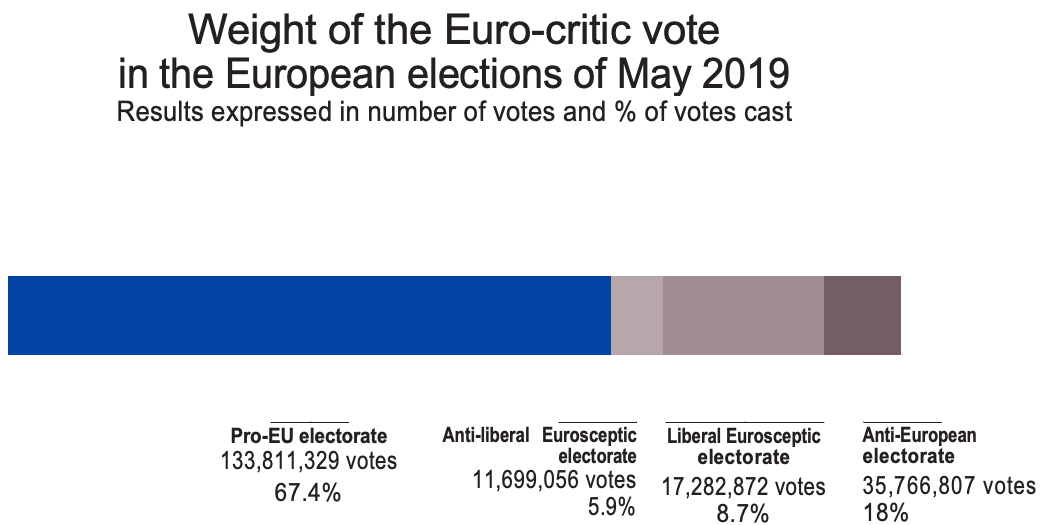
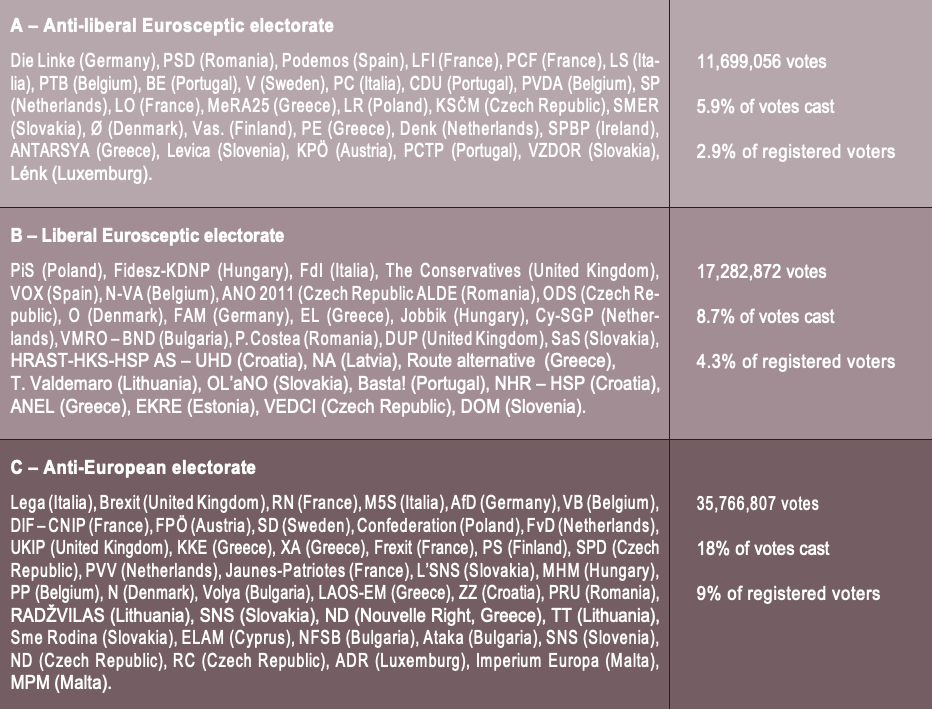
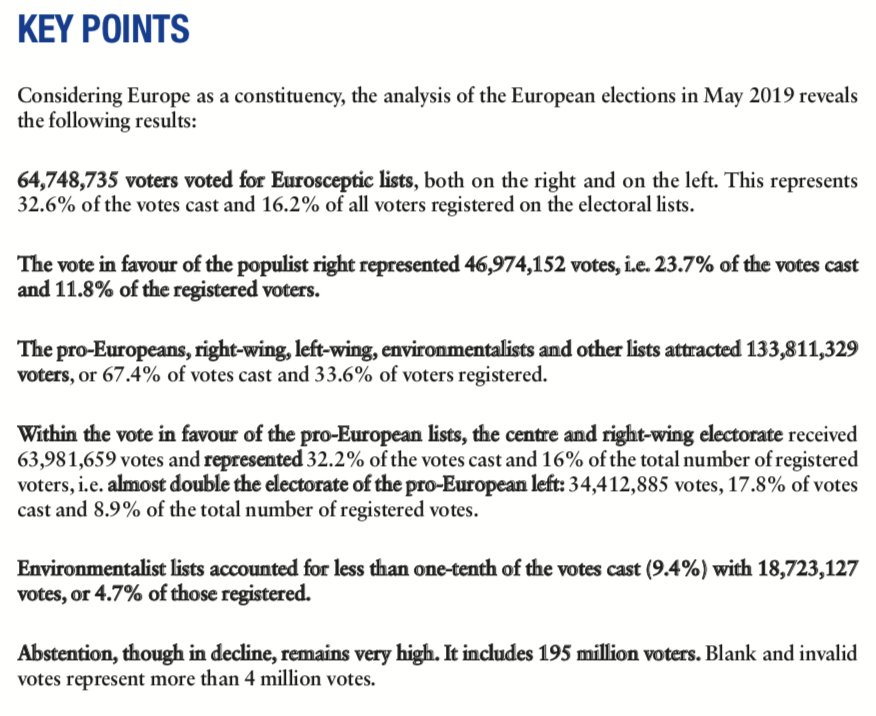

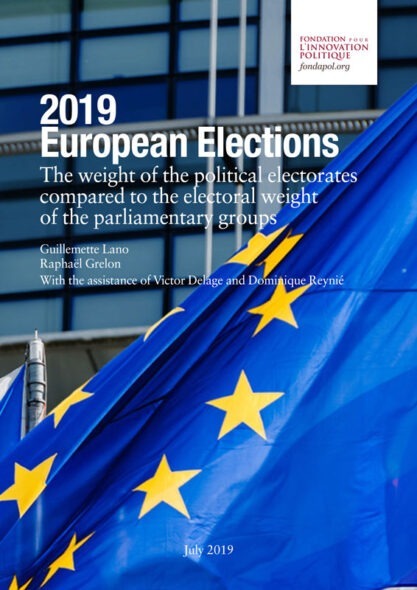
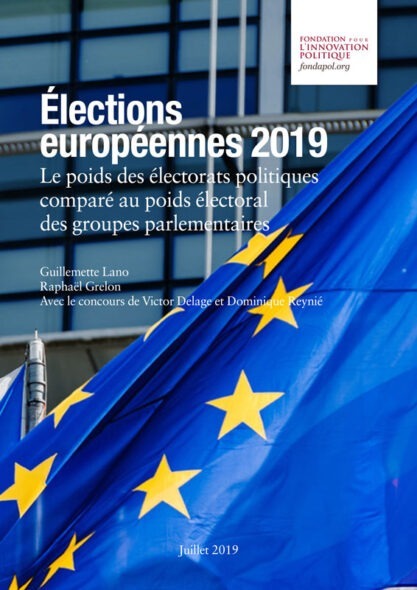
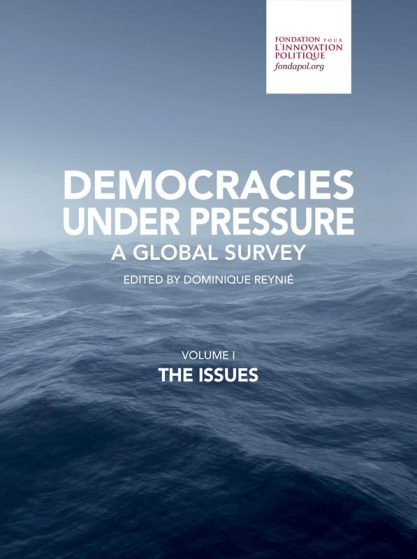
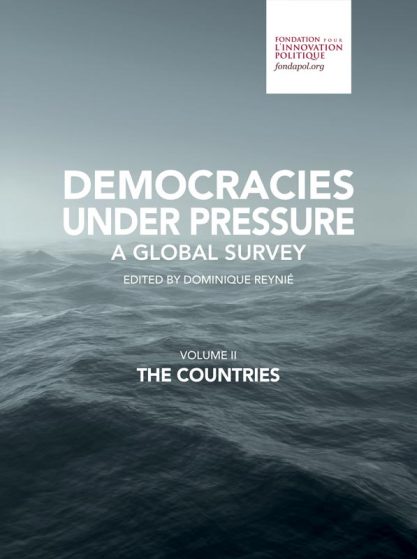




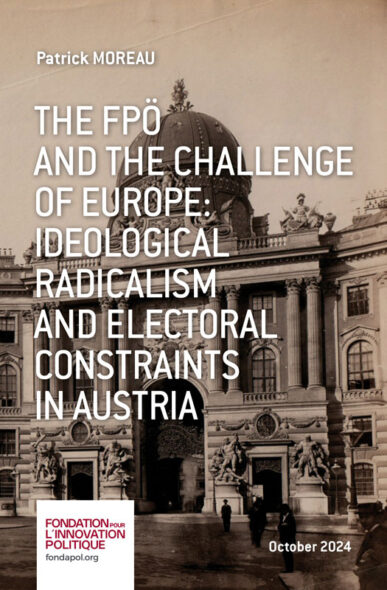

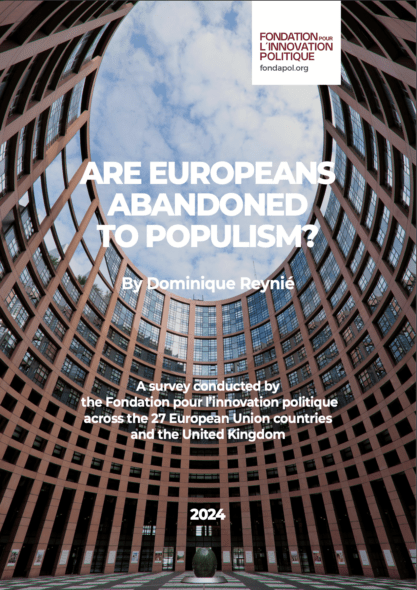
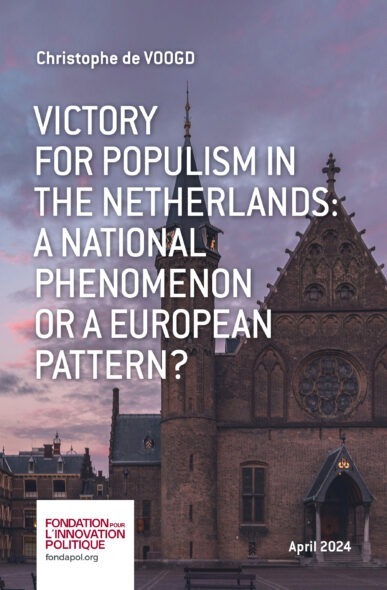

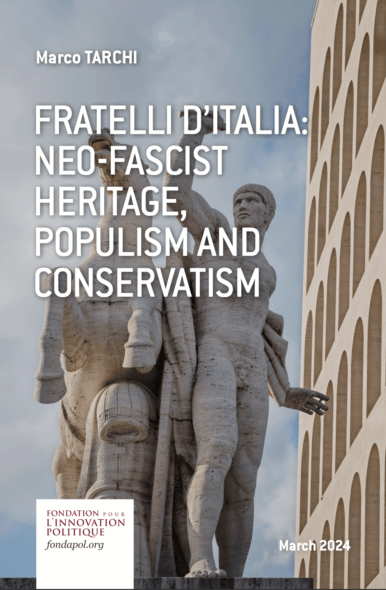
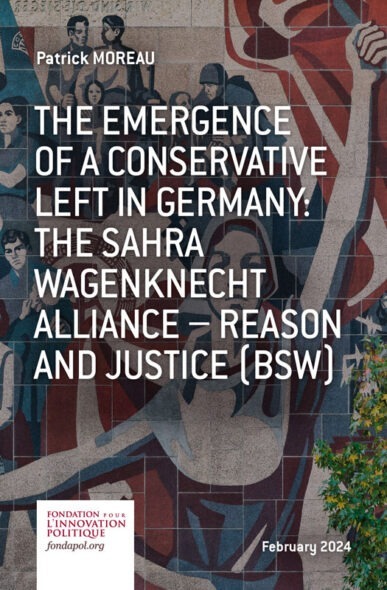
No comments.